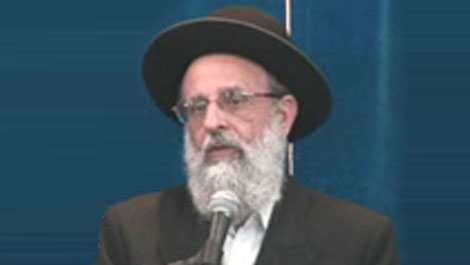Beit Midrash
- Sections
- Chemdat Yamim
- Ein Ayah
Ein Ayah: The relationship between prayer and knowledge of Hashem is different from that between Torah and knowledge of Hashem. In relation to prayer, one draws closer to Hashem only based on an internal, personal sense, based on the emotions of his spirit and the knowledge he previously internalized. It is on the basis of this emotion that prayer is founded.
Torah, in contrast, provides a person with knowledge and insight to absorb additional knowledge which transcends his personal emotions, taking external wisdom and introducing it into his internal spirit. This enables the person to become elevated from holy concepts that go beyond what he naturally is capable of. However, this is possible only if he prepared his personal spirit properly, and in that way, Torah is dependent on periodic prayer, which prepares him to make the most of the experience of Torah study.
For this reason, someone who leaves a shul, after renewing the strength of his inner emotion, and enters a beit midrash to fill his intellect with wisdom from without, will merit greeting the face of the Divine Presence. This is different from the benefit from the glow of the Divine Presence (see Ein Ayah, Berachot 9:357), which relates to the perception of the divine that depends on the spiritual abilities of the perceiver. Here the reference is to a higher level of encounter with the Divine Presence, by grasping the true pleasantness of Hashem, from an objective perspective, not just that which relates to the person’s internal spirit. However, the external knowledge can be effectively absorbed only when it is connected to the internal. This joining of powers is what the gemara means by "from strength to strength."
If one wanted to describe man’s recognition of knowledge of Hashem as it relates to his internal spirit, it should have said that "he sees Hashem," implying that it will be perceived according to his ability to see. However, it is a higher level to connect to this recognition from the perspective of the objective truths of the world, as they can theoretically be absorbed by man. To describe the latter, the pasuk says: "he will be seen by Hashem," implying that it refers to that which is beyond him personally. It is not as if the person sees but he will feel that he is seen by Hashem. In other words, the knowledge that is part of the person’s spirit is apparent as it is connected to Hashem.
The pasuk relates this to Zion, which represents the accumulation and connection of that which is external with that which is internal. After all, Jerusalem’s strengths influence that which is outside it. It represents the Kingdom of Israel existing as a light to the kingdoms of the world. Zion also includes inner values that relate specifically to Israel and how they relate to values and conceptions that are more universal.

A Universal and a Particularistic
Various Rabbis | 5774

Share Secrets Carefully
Condensed from Ein Ayah, Shabbat 8:45
Various Rabbis | Adar I 9 5779

"Various Levels of Bad & Their Exact Judgement"
(Ein Aya Shabbat Shabbat 5, 29)
Rabbi Ari Shvat | Tammuz 5783

Necessary Opposition to the Torah
condensed from Ein Ayah, Shabbat 9:107
Various Rabbis | Tevet 23 5780

Various Rabbis
Various Rabbis including those of of Yeshivat Bet El, such as Rabbi Chaim Katz, Rabbi Binyamin Bamberger and Rabbi Yitzchak Greenblat and others.

Moreshet Shaul: A Crown and its Scepter – part II
Based on Siach Shaul, Pirkei Machshava V’Hadracha p. 294-5
Av 5785

“By their Families and the Household of their Fathers”
2 Sivan 5770

Responsibility for Collateral
5774























